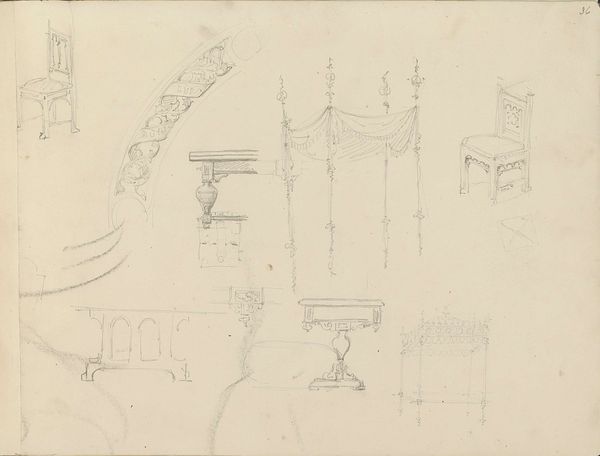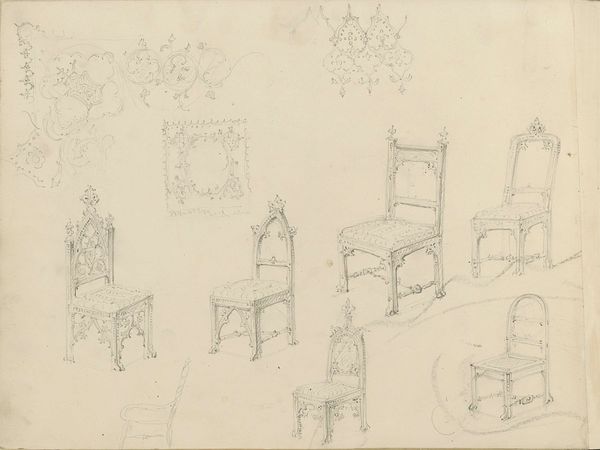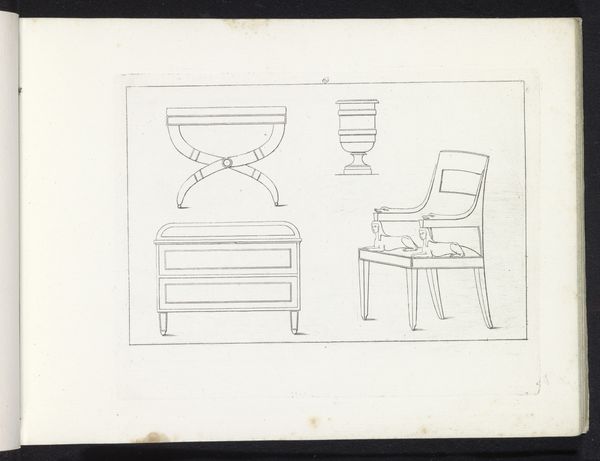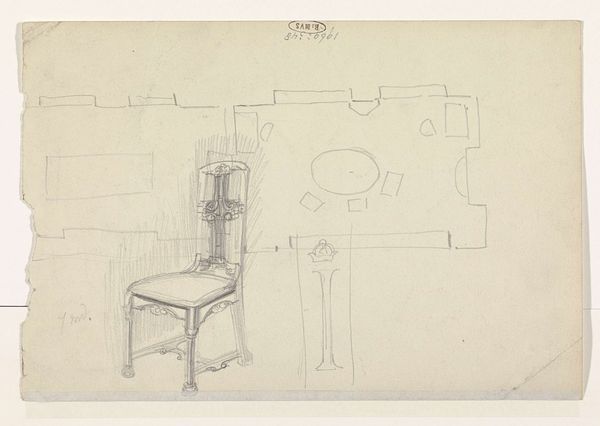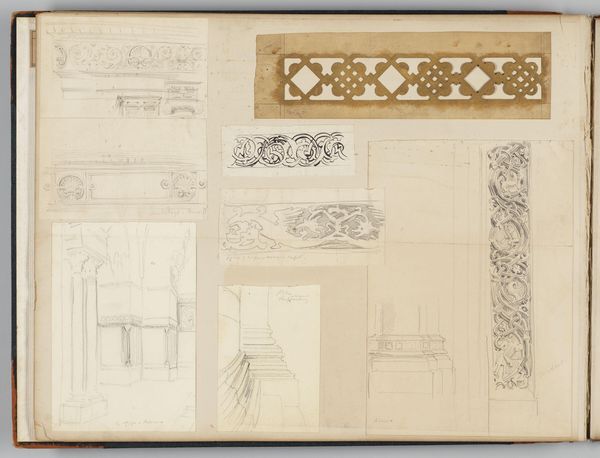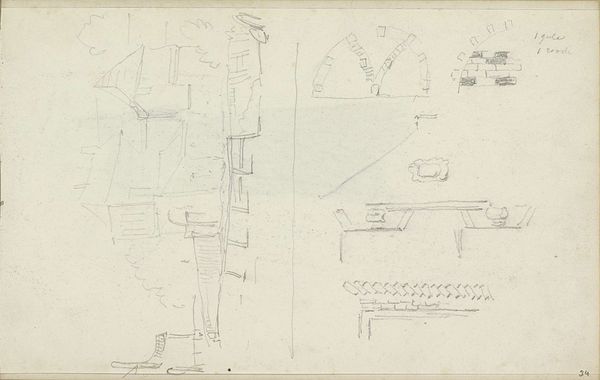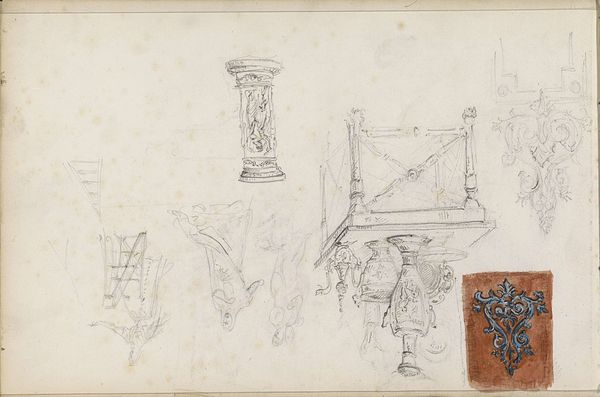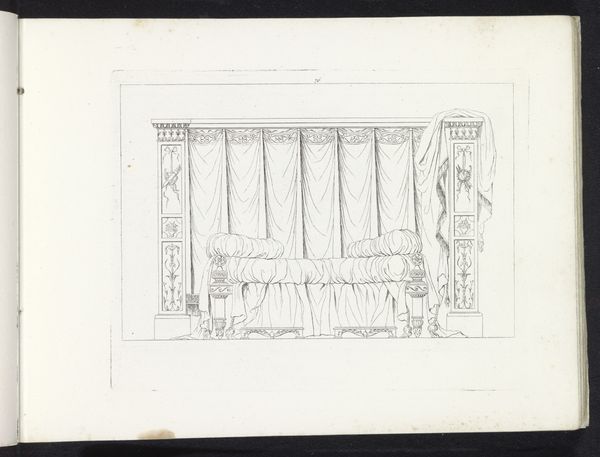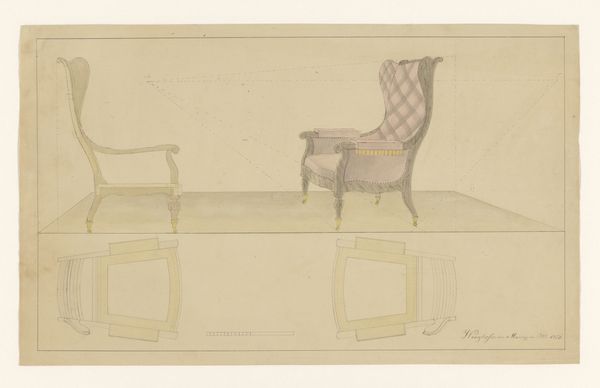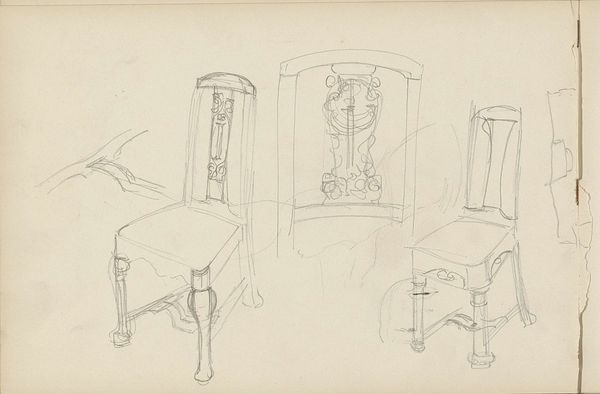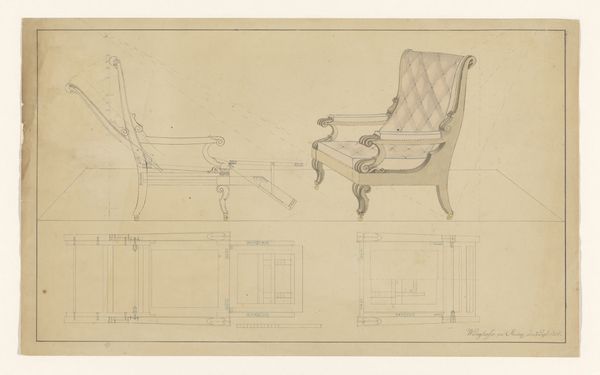
Koorbank, ornamenten en een ontwerp voor een glas-in-loodvenster 1837 - 1921
0:00
0:00
drawing, paper, pencil, architecture
#
drawing
#
paper
#
form
#
pencil
#
line
#
architecture
Copyright: Rijks Museum: Open Domain
Editor: This drawing from somewhere between 1837 and 1921, titled "Koorbank, ornamenten en een ontwerp voor een glas-in-loodvenster," by Pierre Cuypers, presents several architectural sketches in pencil on paper. There’s a rough quality to the sketch of the bench that is especially captivating to me. What stands out to you? Curator: The preliminary nature of the drawing foregrounds the artistic labour inherent in design. The lines themselves show a process of ideation, of sketching out and refining ideas, prior to any kind of manufacturing process. It emphasizes that “architecture” isn’t just buildings – it’s also the intellectual work, the crafting, of envisioning those structures. Editor: So it’s like a record of the creative thought process involved? Curator: Exactly. Think about the physical process, the repetitive action of marking paper with pencil to produce a concrete form from pure imagination. And not only is it one process of production that precedes others – glass-making and woodworking – but that labour would have involved an entire network of makers: the person extracting graphite, milling it, encasing it in wood, the paper-makers, not to mention those who eventually produce these architectural features at a larger scale. The sketch highlights the collaborative aspect embedded in Cuypers’s architectural design. Editor: It’s easy to forget about the stages of artistic planning that came before the final construction. Looking closely makes it clearer how much labor is involved! Curator: Right, the act of sketching as a vital process challenges the traditional separation of art and craft. Editor: This has given me a lot to consider in my own design projects. I am paying more attention to all that goes into the materiality of any finished design!
Comments
No comments
Be the first to comment and join the conversation on the ultimate creative platform.

